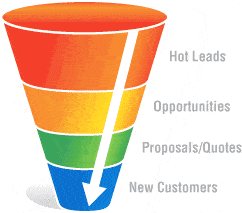Get the Most Out of Your Analytics
 What exactly are marketing analytics and why are they so important? First of all, marketing analytics help to put accountable numbers behind your marketing programs. By monitoring the right numbers, you can maximize ROI and ensure your marketing efforts are producing the greatest response. In turn, you’ll be able to get the most out of your analytics through applying the data to future marketing plans.
What exactly are marketing analytics and why are they so important? First of all, marketing analytics help to put accountable numbers behind your marketing programs. By monitoring the right numbers, you can maximize ROI and ensure your marketing efforts are producing the greatest response. In turn, you’ll be able to get the most out of your analytics through applying the data to future marketing plans.
Traditionally, marketers are seen as the creative types that focus on sculpting an impactful message to drive prospect response. Recently, we’ve seen marketing analytics creep more and more into the marketers’ day-to-day routine. Why is this? Mostly this is because numbers are easily trackable and provide a means for interpreting how prospects interact with your business. Read more about bringing an analytical culture into your marketing practices here.
How to Get the Most Out of Your Analytics
Integrate analytics into the rest of the marketing plan.
Utilize marketing automation to track your web visitors’ activity. The data from those reports will show you which landing pages are the most effective and which CTAs your prospects are following. The tracking software will enable marketers to effortlessly integrate analytics into their daily routine and follow up with prospects, understanding where everyone stands in the funnel. A successful integration should reinforce your sales and marketing alignment. Use your marketing analytics to turn your sales funnel into data.
Interpret the data.
So now you’ve got all of this data, how will you interpret it to get the most out of your analytics? You’ll see better ROI when you’re able to more personally connect with your prospects, so a thorough understanding of their activity and interaction with your brand will help marketers get their point across effectively. Interpreting the data will also aid in sales and marketing alignment in that you’ll be able to refine your funnel, maximize the CTAs that work and cut the attempts that aren’t as fruitful. It is important to prune your data—don’t waste time analyzing data that isn’t showing results or giving actionable items.
Review regularly.
Checking the stats once a year won’t create as much of an impact and certainly won’t help you to get the most out of your analytics. Make checking the numbers regularly a habit—have the data available for monthly or quarterly marketing meetings when the whole team is present so that everyone’s on the same page. Lead Liaison has a solution for keeping an eye on visitor behavior and enables you to gather information and metrics as they happen.
Incorporating these simple steps into marketers’ day-to-day will ultimately aid in gauging new marketing initiatives. You’ll be able to monitor unique visits as well as track return visitors to keep an eye on their buying interest and ensure they are qualified appropriately. Tracking the referring sites of your visitors will also help to point out potential marketing partnerships. Use this fact-based decision-making in order to get the most out of your analytics and ultimately the most out of your current marketing practices.





